Internet connectivity is extremely important in this day and age. So much so that being disconnected can impact everything from your social media updates to your work. While today’s internet connections and web browsers are rather seamless to use, they’re not immune to random bugs and glitches.
In this article, we’re talking about the DNS probe started error, its causes and what you can do to fix the problem.
What causes the DNS probe started error?
The error can be caused by a number of different factors. Some of the most common reasons include:
- Incorrect DNS settings.
- Corrupt browser data.
- Internet connectivity issues.
- Firewall or router misconfiguration.
Also read: How to fix SSL_error_handshake_failure_alert?
How to fix this?
Here are eight fixes you can try out.
Restart your router
Power cycling your network equipment is the fix to more issues than you can think. More often than not, connectivity issues can be caused by an underlying bug in your router and can be fixed by rebooting.
Use the Windows Internet troubleshooter
A lot of times, using the Windows troubleshooter can fix your issue. Right-click on the network icon in the taskbar, click on Troubleshoot problems and let the troubleshooter do its thing.
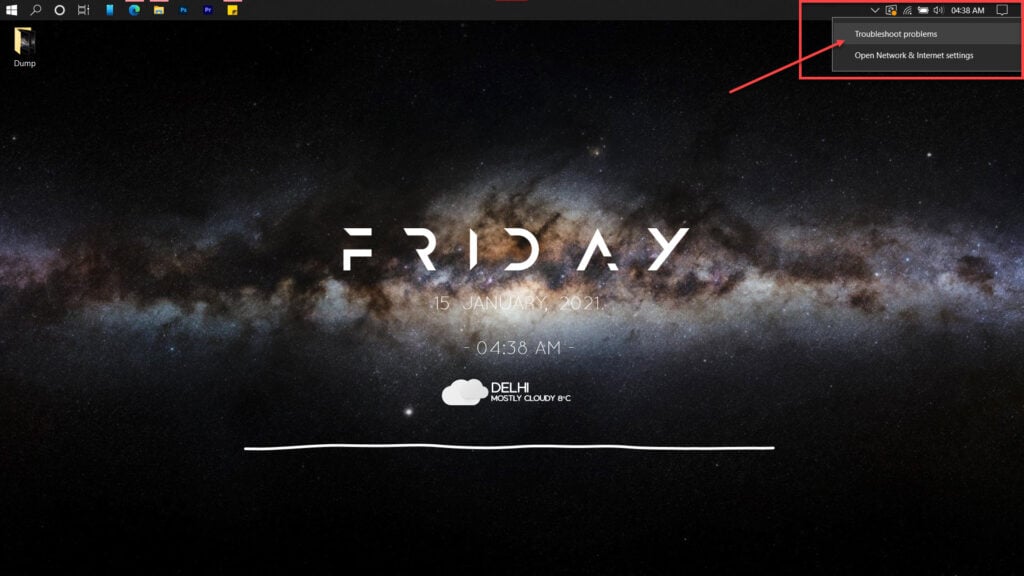
Try disabling your Windows firewall
Sometimes the Windows Firewall can be more of a hindrance rather than a security measure. Try disabling your firewall to check if you can get the browser up and running by fixing the error.
Step 1: Press the Windows key and search for Windows Firewall. Click on Firewall & network protection.
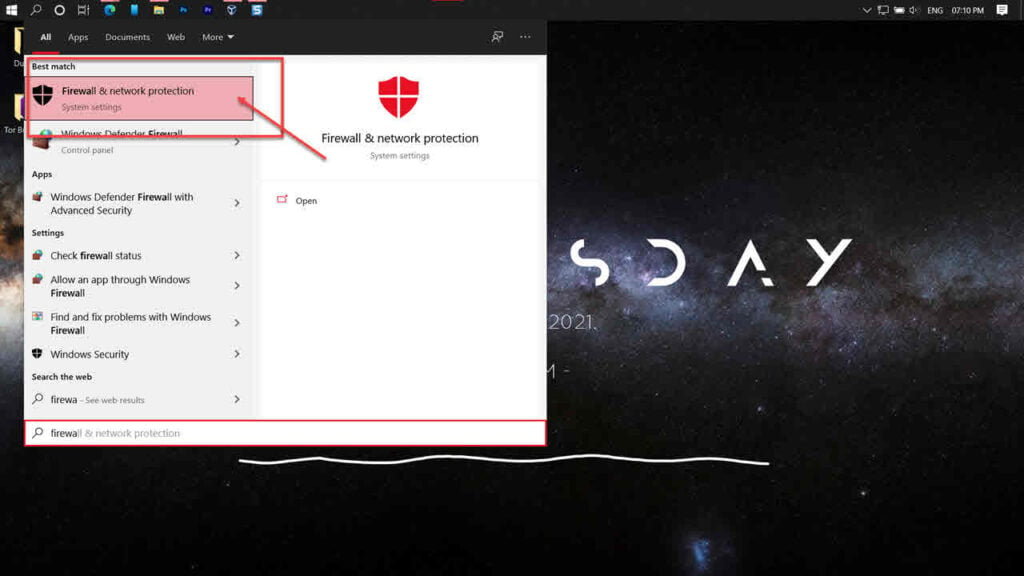
Step 2: Click on Private network or whichever is your active firewall.
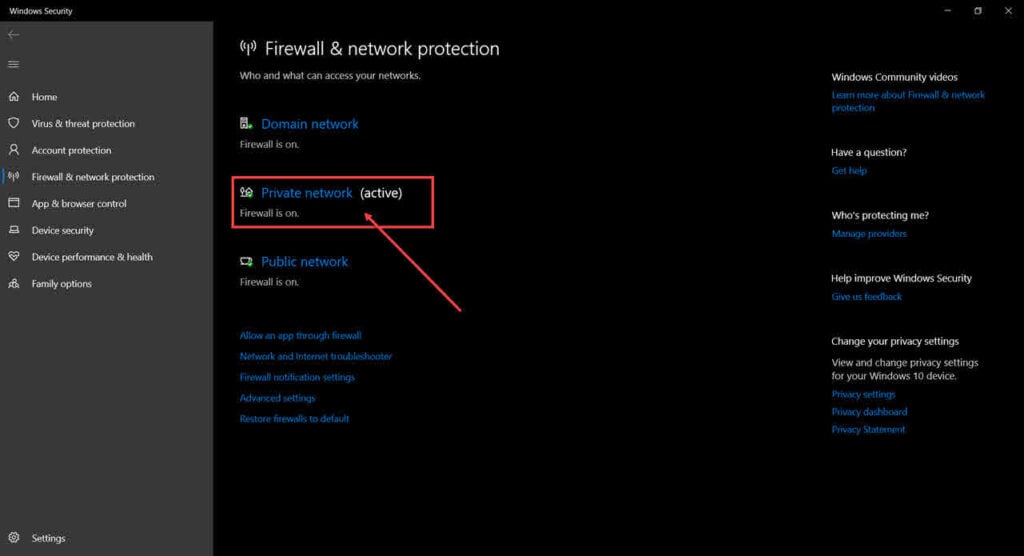
Step 3: Toggle the Microsoft Defender Firewall setting off.
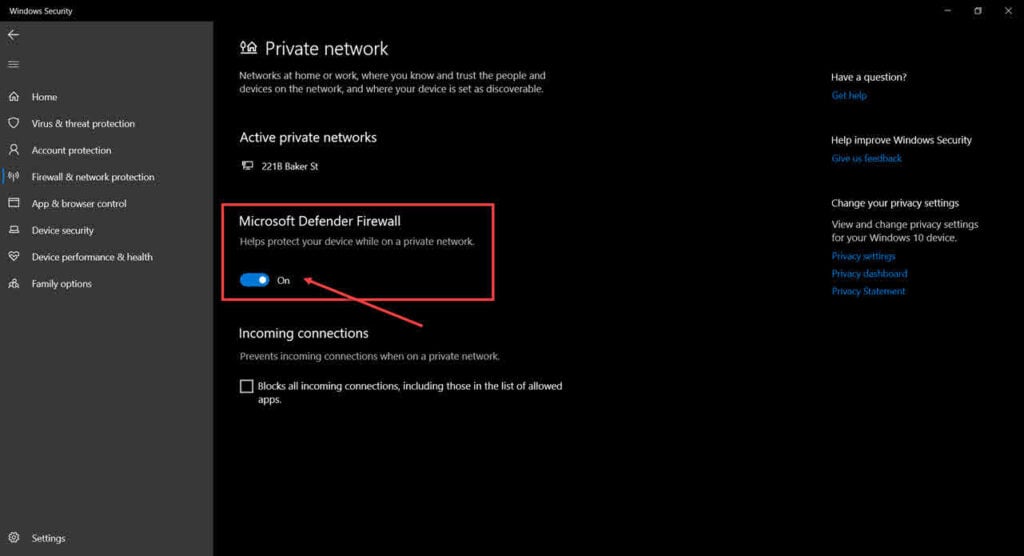
Now restart your browser and try again.
Check your drivers
Your network adaptor’s drivers could be causing connectivity issues. Try connecting to the internet using either an ethernet connection or any other alternative and follow these steps to get your drivers in place.
Step 1: Press Windows key + R, type in devmgmt.msc and hit enter.
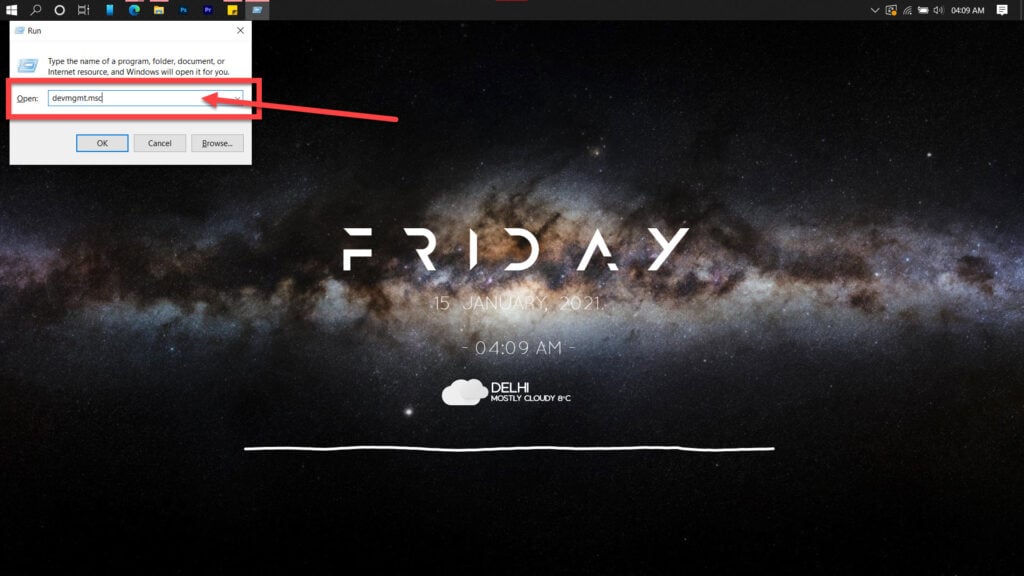
Step 2: Double click Network adaptors to expand it and right-click your Wi-Fi card or ethernet adaptor, depending upon what you need to fix. Click on Update driver.
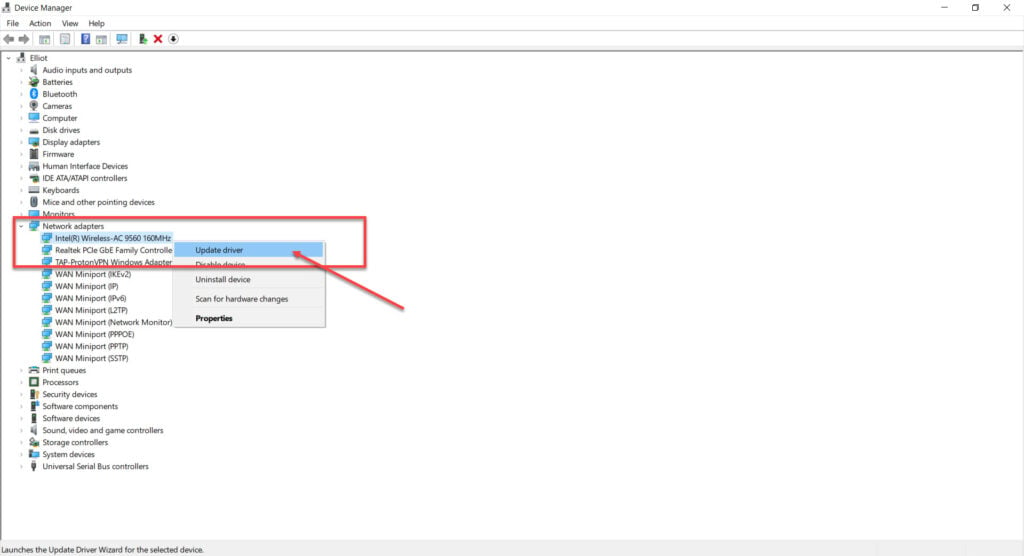
Step 3: Select Search automatically for drivers, and Windows will find and install any available updates.
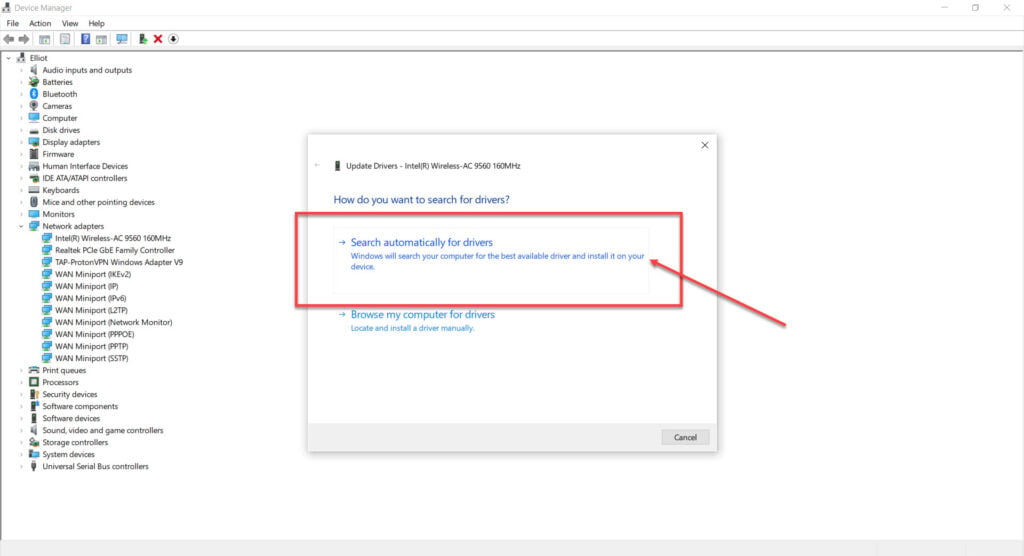
Now restart your PC and try again.
Reset your DNS settings
As you can probably guess by the error, there might be something wrong with your DNS settings. Here’s how you can reset them.
Step 1: Press Windows key + R and type in cmd and hit enter.
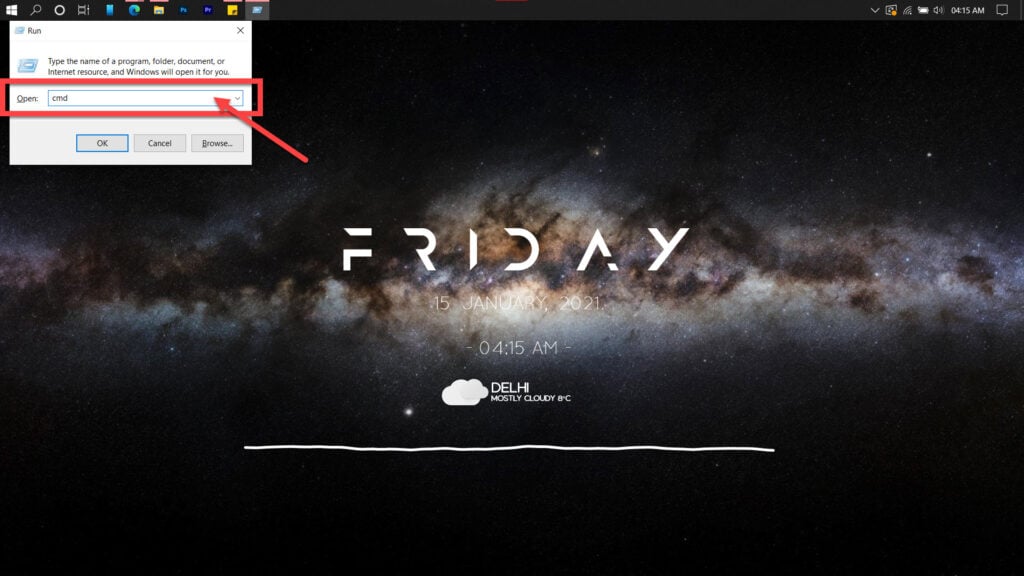
Step 2: Type in ipconfig /flushdns to reset DNS settings to default.
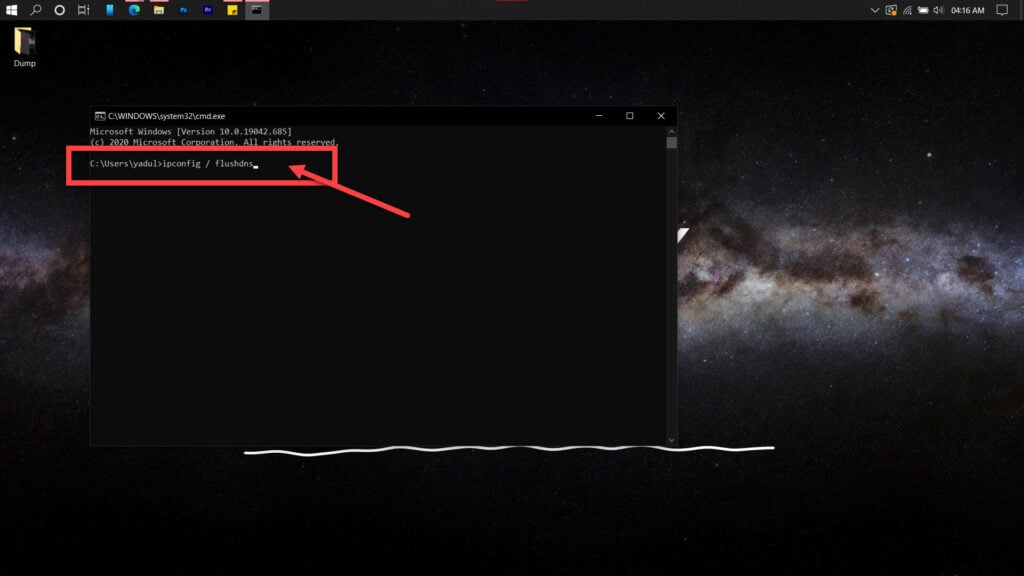
If the above command doesn’t help, try entering these commands in the Command Prompt one at a time.
netsh winsock reset
netsh int ip resetIf you suspect an issue with your router’s DHCP assignment, use these commands to release your old IP and request a new one.
ipconfig /release
ipconfig /renewIf this doesn’t work either, use the following commands to reset your network stack.
ipconfig/flushdns
nbtstat -R
nbtstat -RR
netsh int ip reset C:\resetlog.txt
netsh winsock resetOn a mac, head over to your terminal and type in sudo killall -HUP mDNSResponder. Type your password when prompted for it and try re-accessing the internet. This should fix the DNS_Probe_Finished_Bad_Config error.
Try another DNS
There are multiple free DNS providers using whom you can fix this issue. In this example, we’re going to use Google’s DNS.
Step 1: Press Windows key + I to open the Windows settings and click on Network & Internet.
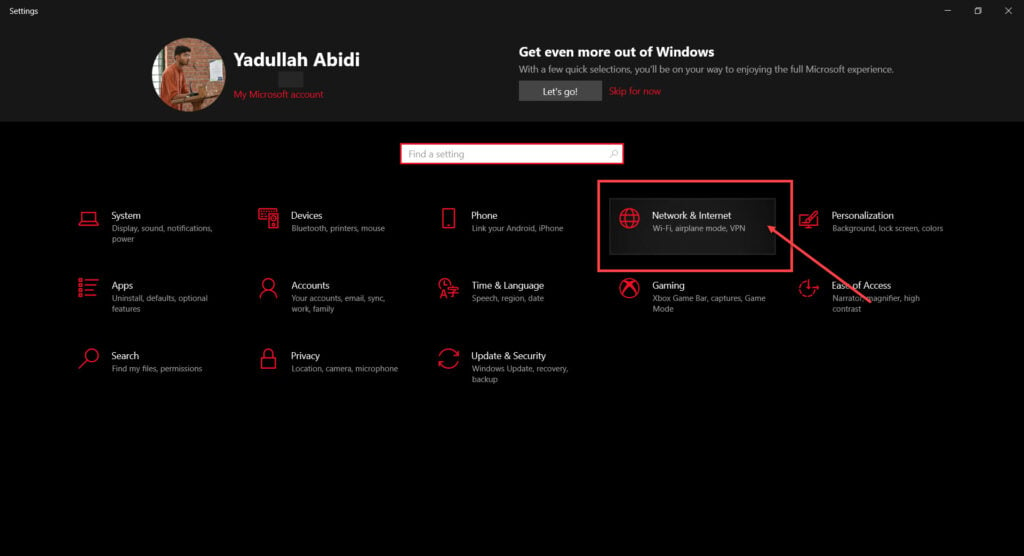
Step 2: Click on Change adaptor options.
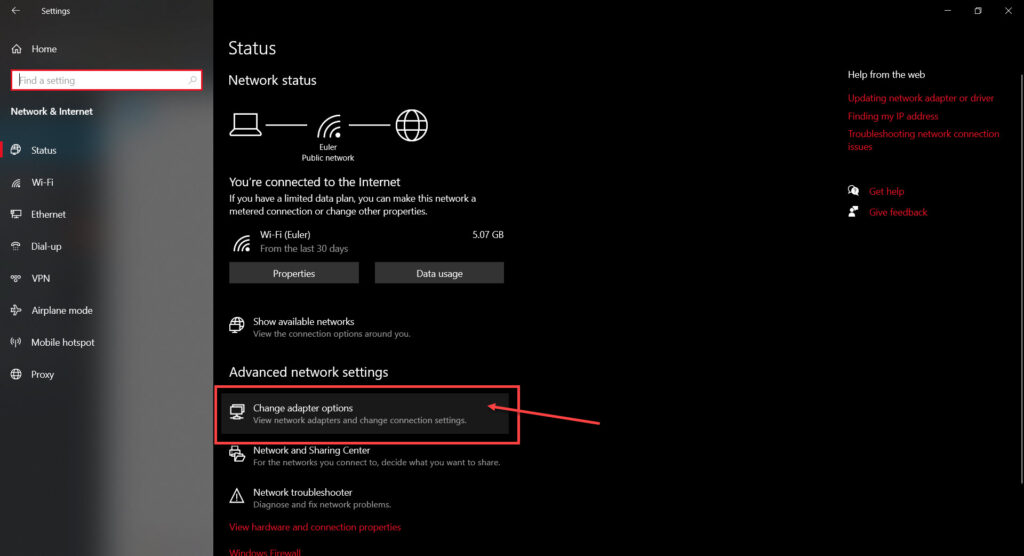
Step 3: Right-click on your active network (WiFi or LAN) and click Properties.

Step 4: Find Internet Protocol Version 4 in the list, click on it and then click Properties.
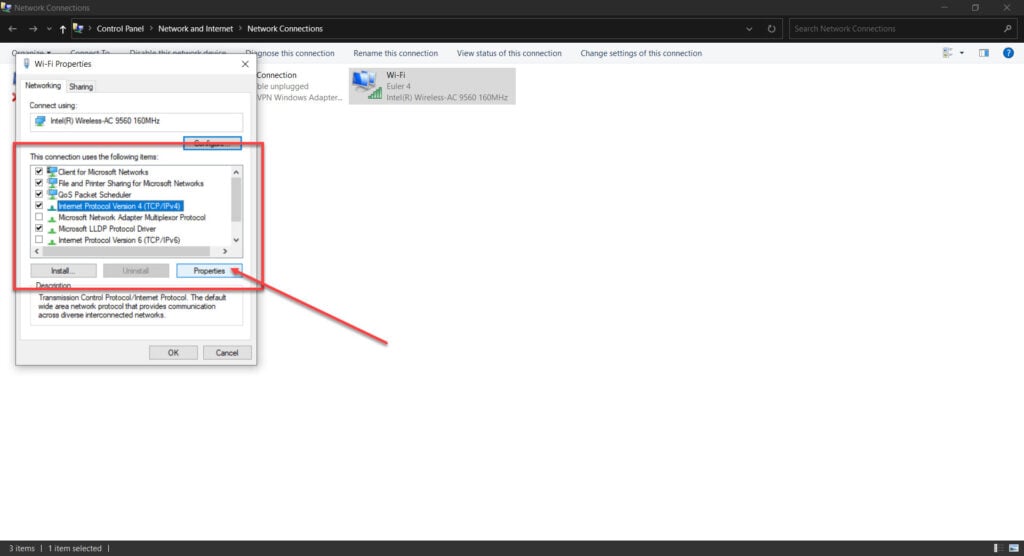
Step 5: Check the Use the following DNS server addresses radio button and type in 8.8.8.8 and 8.8.4.4 in the preferred and alternative DNS addresses, respectively.
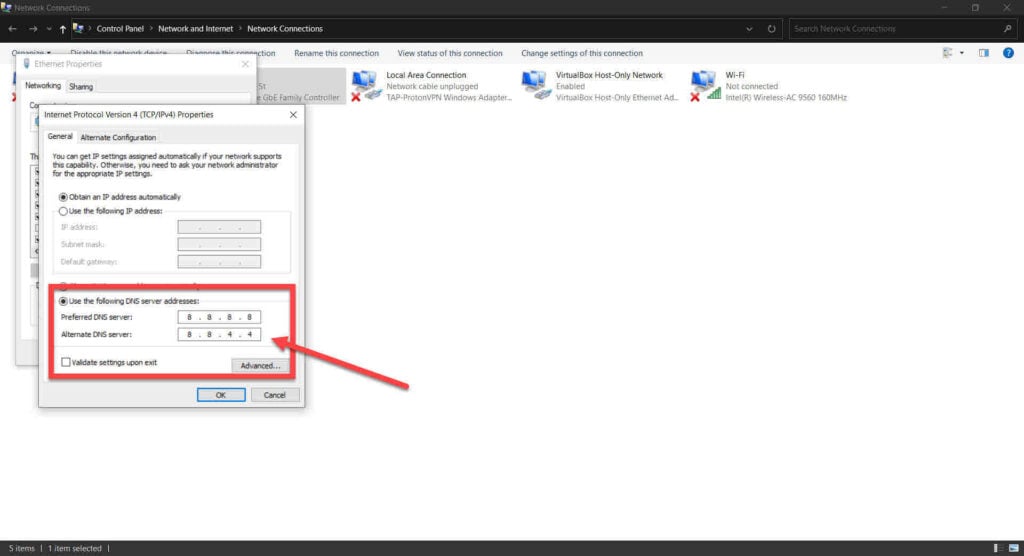
Now restart your computer and you should see the error resolved.
Clear your browser’s data
Corrupt files in your cache or otherwise can cause this error as well. Clear them out to see if you can get Chrome to work.
Step 1: Type in chrome://settings/clearBrowserData in your browser’s address bar and hit Enter.
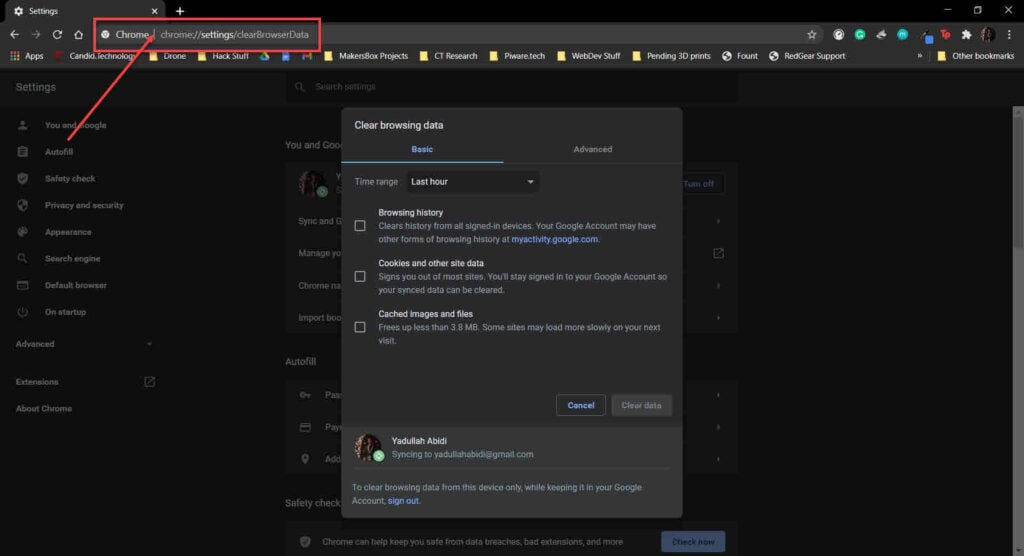
Step 2: Select the cache and cookies options and make sure the Time range is set to All time. Click on the Clear now button to clear out all the data.
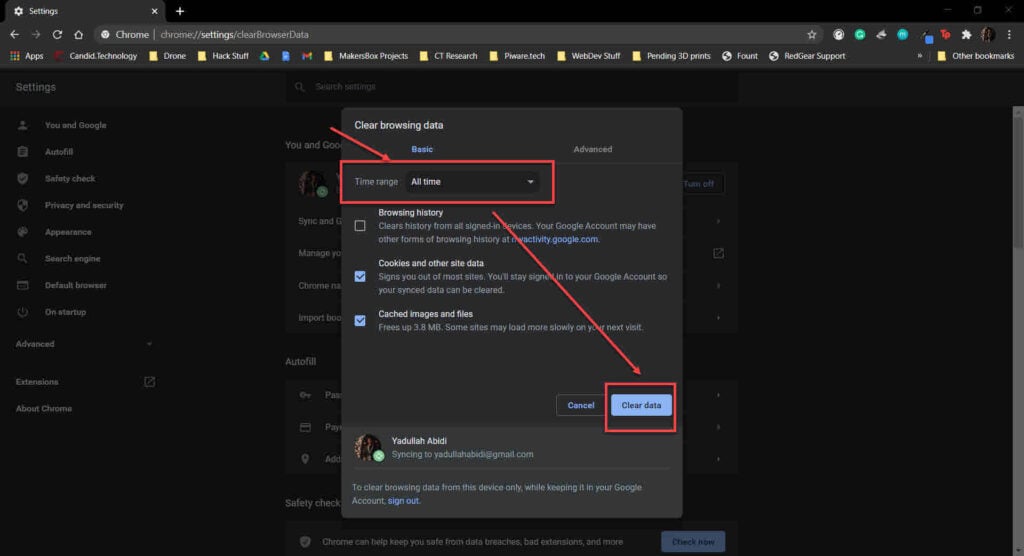
Restart your browser and the error should be gone.
Reset your browser
Resetting Chrome can fix all sorts of random bugs and glitches with the browser.
Step 1: Head over to chrome://settings/reset. Click on Restore settings to their original defaults.
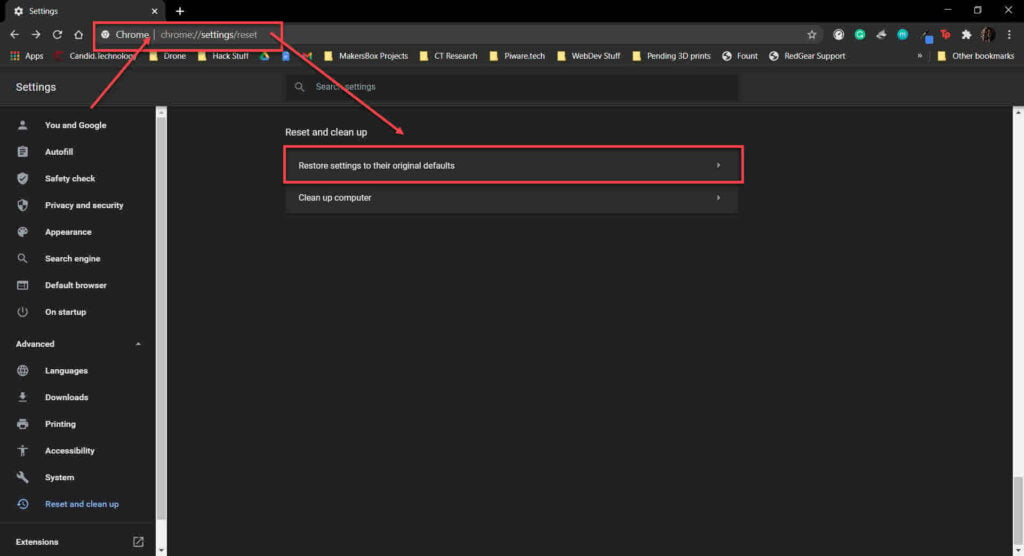
Step 2: Chrome will show you a warning prompt. Click on Reset Settings, and your browser will reset to default settings.
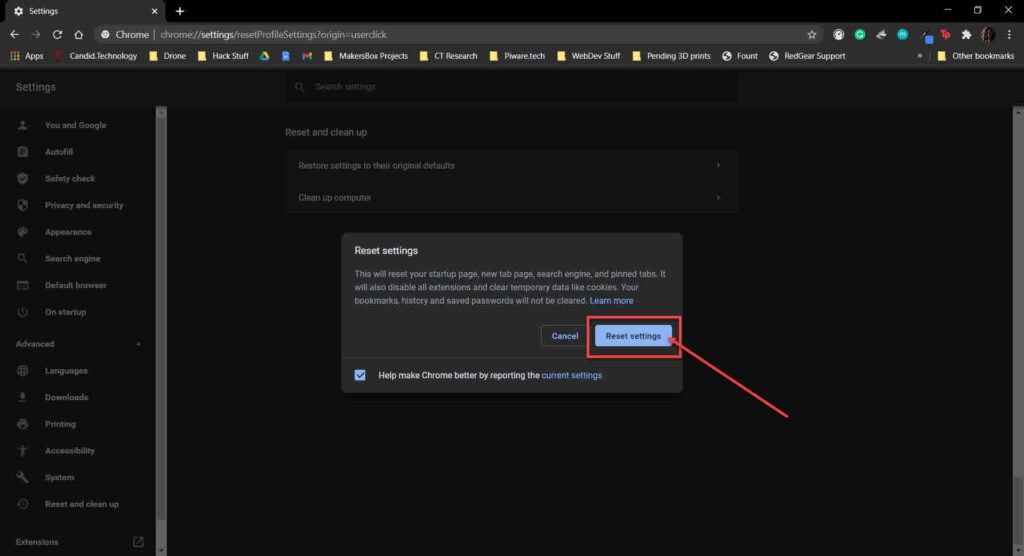
Once the reset is complete, restart your browser and the error should be gone.






